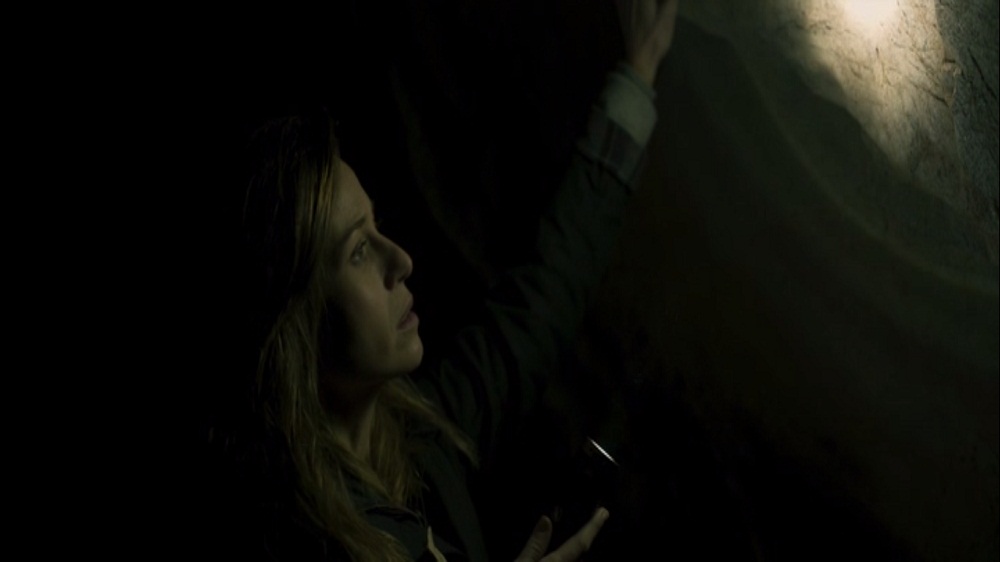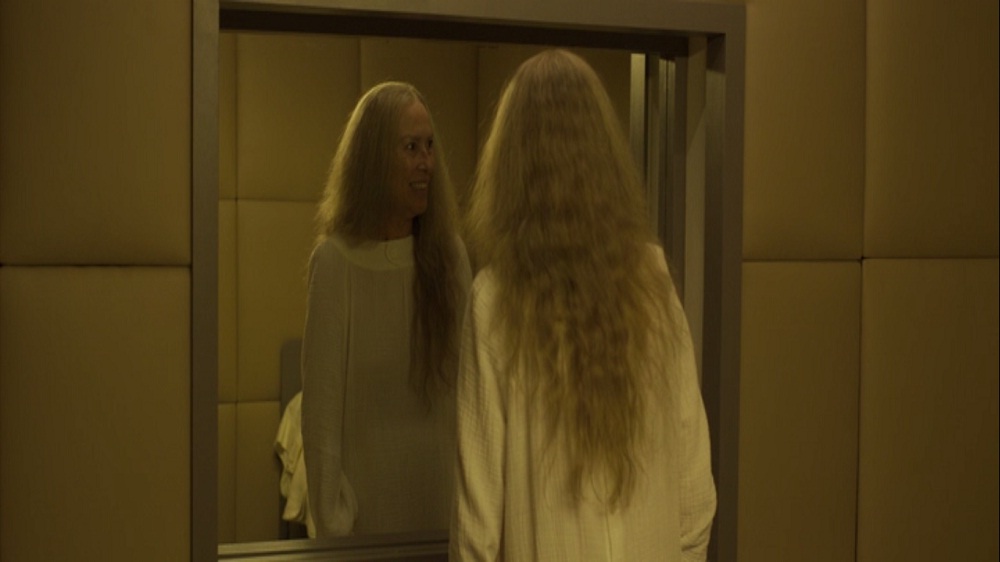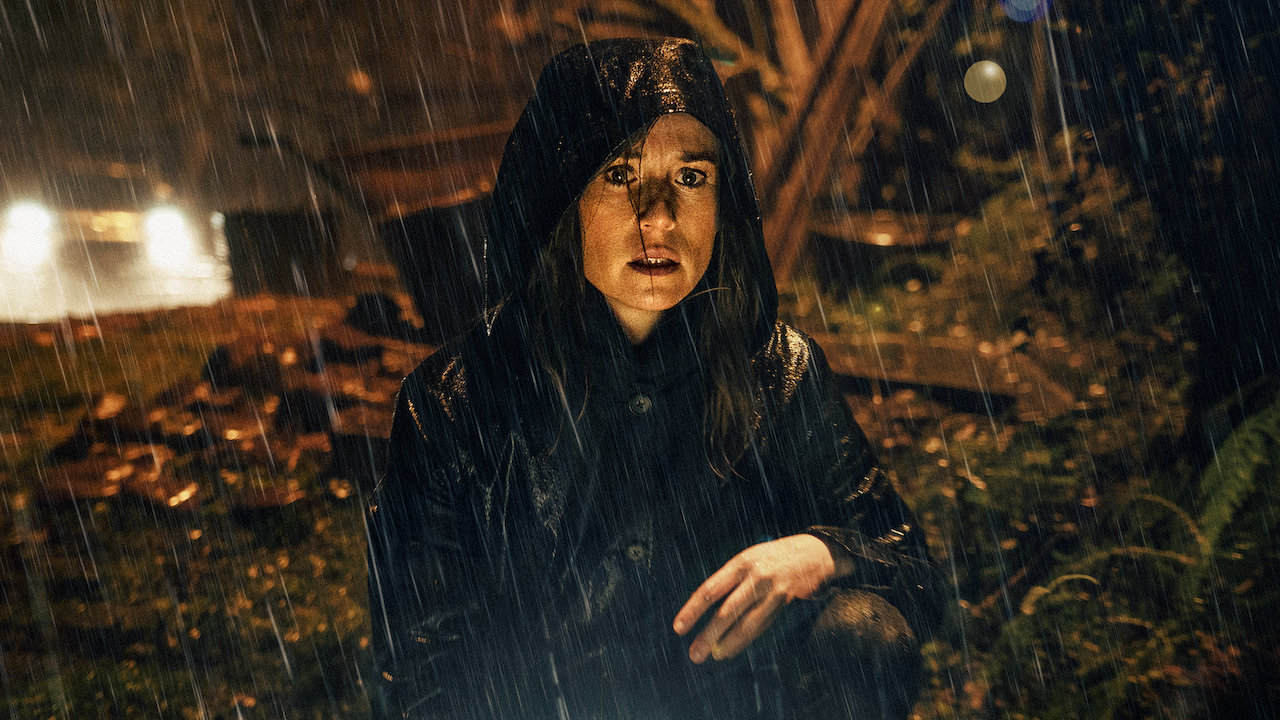At its very outset, ‘The Legacy of the Bones’ gives a tinge of what it’s all about. Depicting the year 1611, it gives a glimpse of a bleak world where witches ruthlessly abduct babies and sacrifice them as a part of a ritual. In the next scene, it features an abutting shot of Amaia Salazar, the inspector we know from ‘The Invisible Guardian’, who is now pregnant. In the moments that follow a series of murders and suicides ensue and seem to have a common link—almost every victim possesses a letter addressed to Amaia, which says “TARTALLO,” the name given to giant Greek Cyclops according to the Basque Mythology.
In the events that follow, the main character delves into the dark mystery that has gripped her city and finds herself amid her old fears and insecurities. Her life goes spiraling down only to make her realize that these mysteries are far too connected to her past. The entire span of the investigation of the movie is pretty convoluted. Also, it subtly includes a few flashbacks throughout its runtime that reveal a lot about what’s truly going on. So further down in this article, we’ll be explaining all of its plotlines in context with its ending.
Amaia’s Backstory

The main segment of the investigation ensues when the bones of a baby are discovered in the perimeter of a church. When a DNA test on the baby’s bones is carried out, it shows that the baby is a hundred percent match to Salazar’s DNA. This makes her question what she knows about her past as she cannot recall having a twin sister.
The film also subtly unfolds a backstory which features Amaia’s parents. This backstory reveals that Amaia’s mother actually gave birth to twin daughters. But soon after this, she killed one of the daughters, and before she could do the same to Amaia, her father stopped her. Her dead twin sister even appears in her dreams and tries to tell her that her mother wants to kill her baby. All of these back story scenes show that Amaia’s mother killed her twin sister because she, too, firmly believed in the twisted ritual practices which involved killing babies.
While she further investigates her mother’s past, she meets one of her old friends. This friend reveals it to her that she and her mother were a part of a recreational group that initially involved normal activities such as yoga. But with time, the man who led them gradually started talking about magic and witchcraft and even manipulated them into practicing animal sacrifices. He then slowly got into their heads and made them perform other brutal things such as killing babies.
Her mother’s friend backed off from the ritual, but the women who did not, ruthlessly killed children all over the city. This explains why so many dead bodies of babies are found all over the place. Her mother’s involvement in the murders was foreshadowed from the beginning itself through all the letters that were referred to her. These letters showed how her mother was trying to target her.
The Ending: Who is Dr. Barasategui?

In the closing moments of the film, Amaia Salazar gets her hands on the call logs of one of the practitioners of the ritual, after she is led to him through his wife. His call logs reveal that he made several calls to the psychiatric facility run by Sarasola. When Sarasola is confronted by Amaia and the two of them head to meet her imprisoned mother in the facility. On finding her cell empty, they go through all CCTV tapes of the facility and learn that Dr. Barasategui, the psychiatrist who was looking after Amaia’s mother, helped her escape from there. A few recorded interviews between Amaia’s mother and the doctor also reveals that Amaia’s mother now intends to kill Amaia’s baby.
Amaia races against time and manages to save her baby just in the nick of time. Meanwhile, her mother escapes from the scene and Dr. Barasategui is taken into police custody. In the end, Amaia confronts him and asks him to tell the truth about what truly happened. Although he refuses to talk, it becomes pretty evident that he committed all the murders and kept the bones in the cave. Moreover, since he was counseling several prisoners, he manipulated them into committing suicide as a part of the Tartalo ritual. The cops later find a cold storage unit that stores all the dismembered arms of the victims with some of them having Dr. Barasategui’s bite marks on them. Using this, they blackmail him and force him to reveal the truth.
As mentioned earlier, in its opening scene, the film makes references to the one-eyed mythical monster “Tartalo.” So before we further delve into the details of the film’s plot, let’s try to understand this reference. To gets things out of the way, Tartalo is not an actual creature in the film and is only named used by the person who is killing and forcing people to commit suicide. And just like the giant cyclops, the person who is behind all of this is also performs Mairu Beso, a right involving the use of a child’s arm in sorcery. This explains why all the victims have a dismembered arm.
From a metaphorical standpoint, the film shows how “Tartalo” is present in all the humans who ended up on the wrong side of the road. Dr. Barasategui, Amaia’s mother, and even the witches depicted in the opening scenes of the films were all so involved in their delusional beliefs of the supernatural that they were willing to give up on their own morals as humans. It also shows how the witches intended to desecrate the church and were so willing to defy its teachings that they themselves became the embodiments of Tartalo.
Read More: The Legacy of the Bones Review


You must be logged in to post a comment.